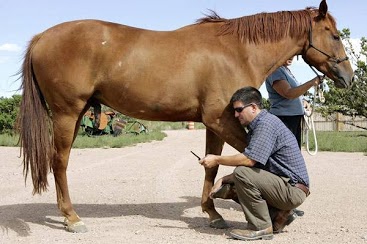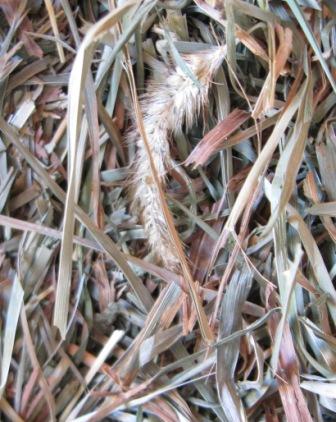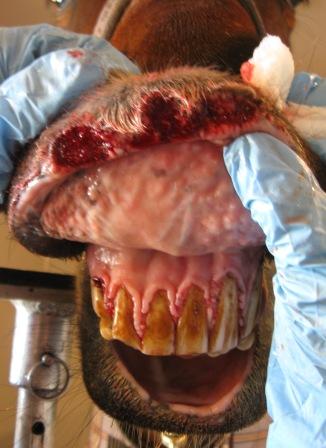
Inspect hay for dangerous millet seed
Dear Vet,
My vet recently found millet seed embedded in the gums of all my horses. Some had sores in their mouths. She had to pry the millet out of the gums. Many of the hay dealers think millet is OK in the hay, and not anything like foxtails. Is this true? — M.C.
Dear M.C.,
There has been a very high incidence of hay infested with millet seed around Albuquerque and Santa Fe in recent years. Millet seed is actually a form of foxtail called yellow foxtail (Setaria glauca), also known in some areas as bristlegrass.

Millet seed has quite a distinctive look when dried and cut into hay. It is best to become familiar enough with how it looks so that you can spot infested hay before you buy it. You can often see lots of the millet heads sticking out of the bale. Avoid buying any hay that is likely to be from the same pasture and cutting (such as other bales in the load). Sometimes only a few bales are affected, but it is best to avoid the batch altogether.
If you get your hay home and only then see millet within the flakes, call your hay supplier immediately and ask what the policy is on returns. Most reputable dealers will readily trade you for a clean batch if they have it available.
Millet seed can be very irritating to horses’ mouths. Some horses seem to be more sensitive to it than others. Most commonly, they will develop ulcers on their gums, lips, tongue, or along the edges of their teeth. The tiny hairs from the millet get driven deep into the flesh, causing a severe reaction with deep ulceration and raised borders. These sores are very painful, and may cause horses to be off feed or to eat slower than normal. They may become head-shy, or be reluctant to be haltered or bridled. On occasion a horse will show no outward signs, and lesions will be discovered only during a routine exam.

The most important treatment for millet lesions is removing the contaminated hay. You may have to feed soaked hay or a pellet diet until the sores heal. Next, have your veterinarian remove the hairs embedded in the ulcerated lesions. This may require sedation and a mouth speculum, in severe cases. The hairs can be removed by debriding the lesions with a piece of gauze and a hemostat. If the sores appear infected, a course of antibiotics may be required. If your horse’s teeth are very sharp, a dental float will speed healing.
The best course of action is avoidance. Learn how to become familiar with the culprit and be on the lookout as you purchase this year’s new hay!
Mark T. Meddleton is owner-manager of Meddleton Equine in Albuquerque’s North Valley. Contact him at 344-2680 or drmeddleton@meddletonequine.com.
